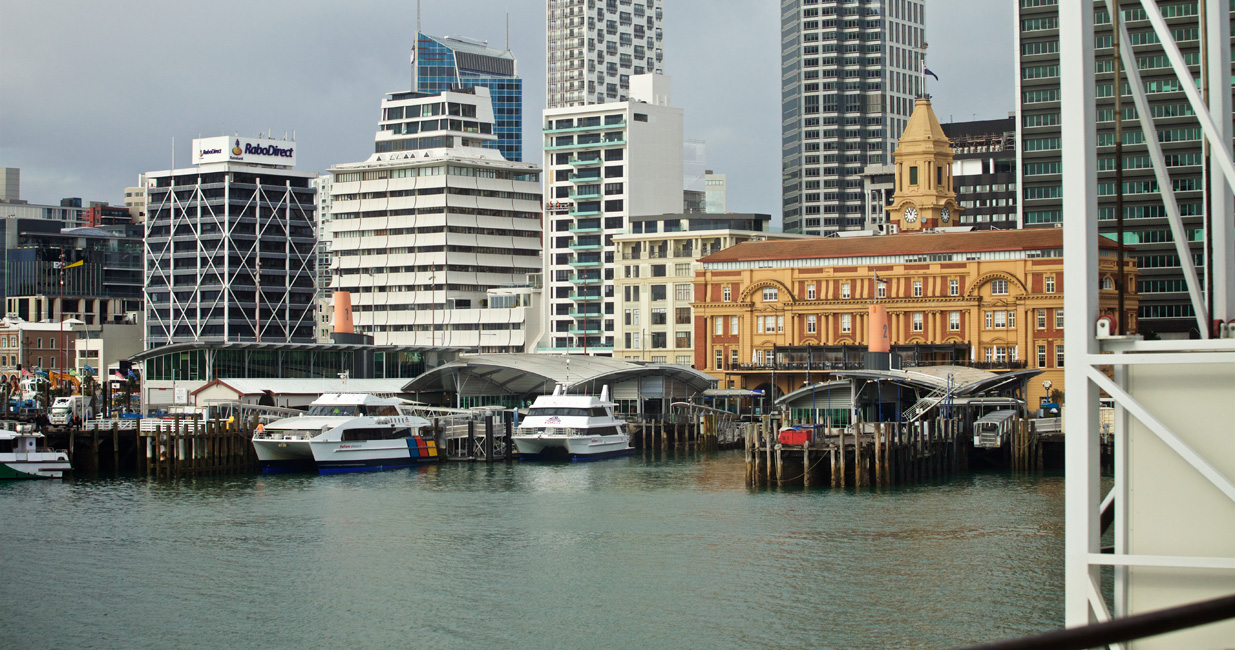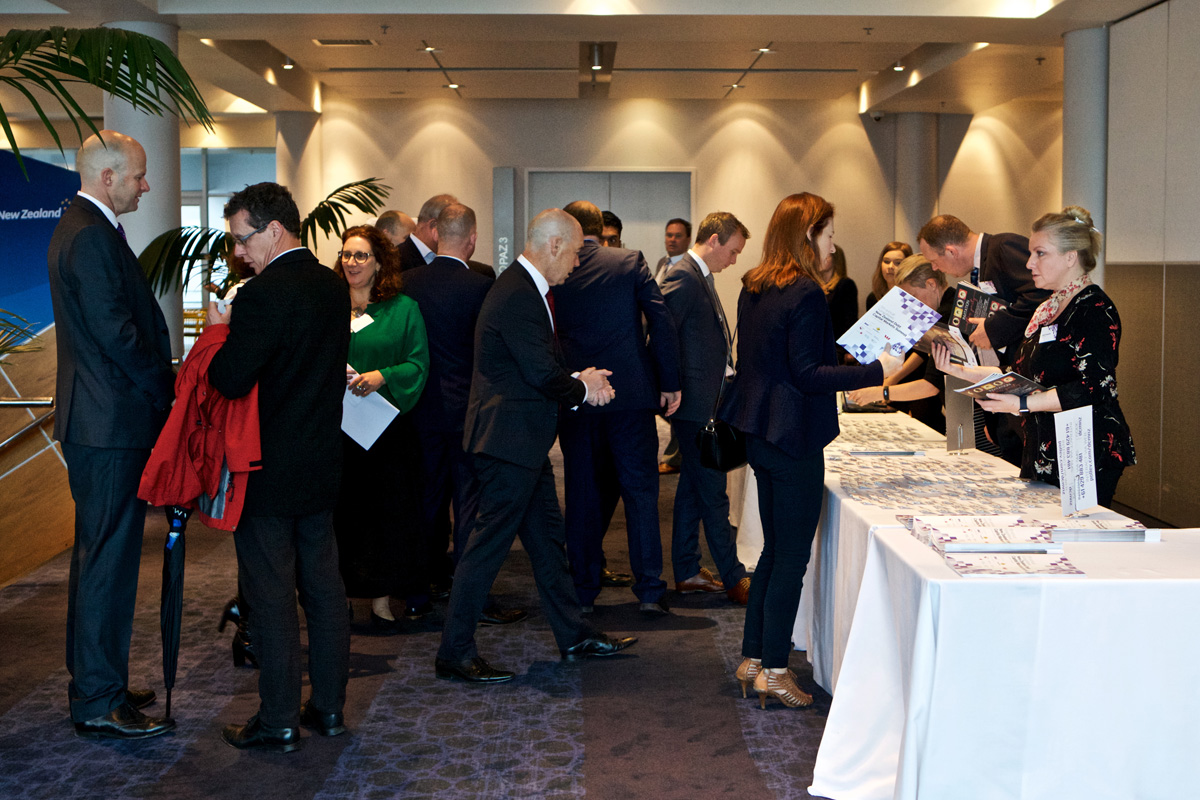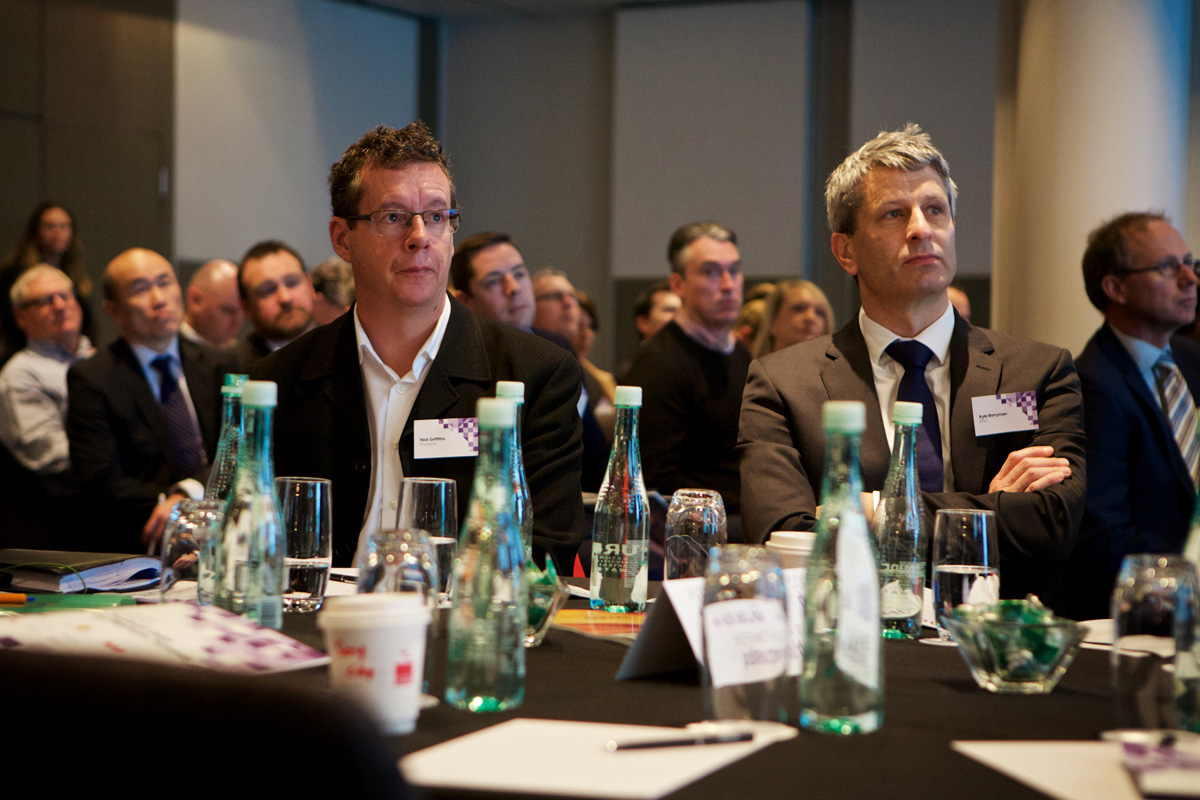
The big picture
KangaNews hosted its fifth annual KangaNews NZDCM Summit on 2 August. In 2017, the discussion was more topical and wide-ranging than ever before, giving insights into local socially responsible investment, the views of New Zealand’s C-suite on the business environment and a geopolitical outlook. KangaNews is pleased to share a flavour of the content from this unmissable event.
“There is an inherent tension with hybrid instruments. Issuers want them to look like debt from the perspective of the tax authorities while also looking like loss-absorbing capital from the perspective of the prudential regulator. Trying to meet these two objectives can work but often generates complexity and in some cases simply doesn’t work.”
“How banks are resolved when they get into trouble is a crucial issue and one that is still evolving. Spain’s Banco Popular still had nominally adequate capital shortly before it was resolved. This suggests that future bank resolutions may come earlier than previously expected, but with the upside that early intervention may reduce loss rates.”
“Where do we encounter liquidity risk in the market? I would suggest the functioning of trading platforms where market-making is increasingly provided by electronic trading should be an area for scrutiny. Recent flash events in stocks, bonds and currency pairs suggest that liquid and highly traded markets may, perhaps ironically, be the most vulnerable to liquidity shocks.”

"The conversation with offshore investors usually starts with housing and ends with dairy and I don’t think pricing on our local capital-qualifying bonds has been affected greatly. But in terms of the reserve bank capital review the situation with Kiwibank’s capital securities may well have changed the order of the consultation to start with what capital instruments should look like.”
"I think one would have to say there has been some influence from the macroprudential limits which has caused loan growth to tail off at both ends of the LVR spectrum. Typically, with macroprudential changes there is a lag effect of when the impact takes effect. Lower consumer confidence is also likely to have had some influence on loan growth.”
"I don’t think any of the banks believe we need less capital. We are in the fortunate position now where APRA has given us a floor. We know that New Zealand is more vulnerable to shock than Australia so we know our number should be above 10.5 per cent. But if we want to be held to international standards we have to be internationally comparable. The idea that we can build a full capital base without a full set of instruments doesn’t make sense.”

“Ratings are very important to us when we’re thinking about capital management. We need to hold our double-A rating for several reasons. One is cost, but there is also a huge reputational risk to being downgraded – and even to being put on negative watch. If either were to occur, there would likely be a flow-on effect to the LGFA and to the Crown.”
“Relative to global headwinds, looking around New Zealand I can’t help but feel positive. The country’s main issue is dealing with growth, and that’s a good problem to have. We need to get used to the possibility that we’ll have continuous growth over a long period, unlike the cycles of boom and bust we’ve experienced in the past – and where we have not been confident enough to make long-term decisions.”
“There is a whole raft of technological and disruptive changes at the consumer end of the value chain that we need to be prepared for so that we don’t overinvest in transmission infrastructure. This is something we need to achieve for the long term but with some urgency and priority. There is a lot of pressure on us to deliver for Auckland but equally to not overinvest taxpayers’ money over the intergenerational period.”
“With macro-environmental forces driving structural market change, the biggest focus for businesses is working out how far and fast to adapt and transform. The business leaders on our panel impress with their focus on embracing change, and securing their futures through disciplined strategic thinking and planning.”
“Some people are predicting that there will be no need for a grid by the late 2020s as solar will be cheaper. We don’t see our future business model at Genesis Energy as being about just grid energy – our purpose is to put control in customers’ hands regardless of how their energy is being produced as we transition from being an energy supplier to the role of energy manager.”

“Over the last few years issuance of Australian RMBS has been larger than that by European or US private-label RMBS. In many other securitisation markets, ABS is the dominant asset type. The Australian market has developed in its own way and with its own nuances but this doesn’t mean the New Zealand securitisation market has to follow Australia’s lead.”

“A significant number of jobs have been created in the service-oriented industries over the past couple of years, which tend to be low-skilled, low-paid and low in productivity. The counterfactual is that if these people weren’t in jobs, productivity would be even lower. How can New Zealand solve its low productivity problem?”
“During the industrial revolution, the social impact was predominantly in the bottom end of the workforce: the people doing the manual labour. But today, technological change is attacking mainly middle-income earners – accountants, lawyers, doctors – and they don’t know what has hit them. This will have social implications and is a major factor in global political unrest.”
“From the perspective of people’s prosperity over their lifetime what they’d like to see is the real purchasing power of income and assets increasing. We may have to get used to the idea that actually the value of an investment might fall over time but real purchasing power, when you sell, still goes up over time – just as it always has.”

“Many in finance misconstrued the signals, interpreting the fact that only a small number of consumers chose ethical products for investments as meaning that they don’t really care about responsible investment. In fact, consumers already expect that the way their retirement savings are being invested, at a minimum, does no harm. They expect KiwiSaver is already not investing in industries that universally ‘should’ be excluded.”

“We did not see any dedicated green funds come into our Kauri deal although some investors, that we’d normally see in the mid-part of the curve, accepted the longer tenor because the bond was green. Our hope is as more issuers come and the aggregate level of green bonds increases we will start to see more dedicated green funds in the market.”
“There is lots of research backing up the fact that a company that has better governance, environmental and social factors relating to it will provide a better and more consistent financial-return outcome for investors over time. Also, the make-up of companies has changed over the years in the sense that intangible factors make up 80 per cent of a company’s value. These factors cannot be ignored any longer.”
“We can all keep taking our recycling out to the kerb every other week but I fear it won’t be enough. Perhaps it’s in our professional lives where we can make the biggest difference, through the interrelated concepts of directing our investment flows, responsible investment, and adopting an ESG approach to investing where we can – and thus harness the signalling power of financial markets.”
“Integrating ESG matters will improve the portfolio – we believe it will pay off. We believe it’s a source of opportunity and a way to control risk across all our asset classes. Also, our governing legislation requires us to apply best-practice portfolio management and avoid prejudice to New Zealand’s reputation. I call this 'practice and prejudice'.”
“Forty per cent of investors in NAB’s debut green bond were dedicated green funds. Fast forward two years to NAB’s euro deal and 93 per cent were green investors. The demand side is certainly there but what we need more instruments. This requires market leaders to execute transactions and take the risk.”

“Year to date, offshore investors have increased their holdings of LGFA bonds by NZ$700 million. They continue to increase monthly and so we are not worried about concentration risk or capacity. We may well have to fund in offshore markets at some point in the future but I don’t envisage this will be for several years yet.”
“Feedback from domestic and global investors around the government’s commitment to maintain a minimum volume of NZGBs on issue has been consistently positive. The NZDMO felt it was important for both investors and intermediaries to have clarity around the level of NZGBs on issue, given the continued strengthening of the fiscal position. The NZDMO believes this will improve liquidity both now and in the future.”

“As KiwiSaver grows and we get more data on funds flows we will be able to carry out statistical analysis regarding essential draw downs. At the point where we know much more about the stickiness of our investors we can start thinking about taking an illiquidity premium. For now, liquidity is paramount.”
“A key issue for investors is liquidity and we can’t claim that someone will buy our securitised paper if times get difficult. We know that when investors hold our paper to maturity they don’t lose money but this doesn’t help make a case in New Zealand where it is more important for investors to be able to liquidate their books if they need to.”
“In terms of enabling diversity in the New Zealand market we are quite well set up with our existing rules. The FMA has power to designate products that otherwise would be equity as debt or vice versa and this mechanism, though rarely used, could help to bring unusual or nonconforming products to market.”
“While we’ve been in reasonably benign conditions in New Zealand, even during the financial crisis, massive amounts of liquidity have been withdrawn from global markets. This is the time to be absolutely aware of fixing the liquidity issue. We’d love to see regulators have more drive to work through these issues so we’re not sitting here in two years having the same conversation. Now is the time because we are not going to see volatility this low again.”


HIGH-GRADE ISSUERS YEARBOOK 2023
The ultimate guide to Australian and New Zealand government-sector borrowers.

nonbank Yearbook 2023
KangaNews's eighth annual guide to the business and funding trends in Australia's nonbank financial-institution sector.

WOMEN IN CAPITAL MARKETS Yearbook 2023
KangaNews's annual yearbook amplifying female voices in the Australian capital market.

SSA Yearbook 2023
The annual guide to the world's most significant supranational, sovereign and agency sector issuers.













